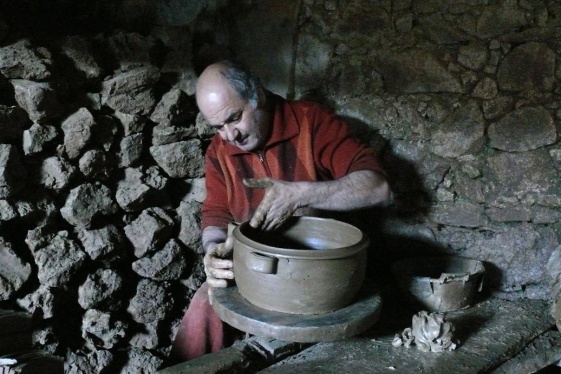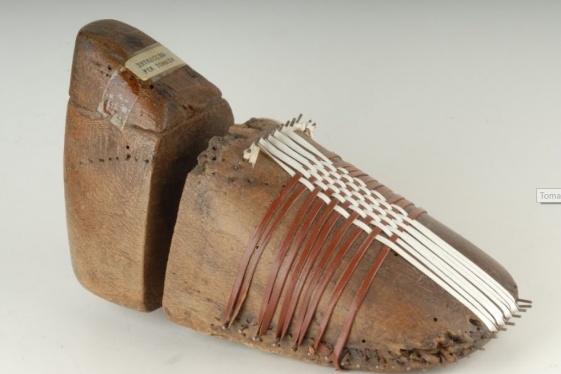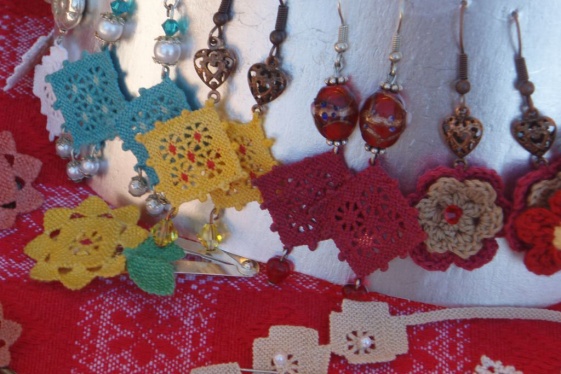
Unioncamere
Unioncamere - the Union of Italian Chambers of Commerce, Industry, Handicraft and Agriculture - is the public association that institutionally collects and represents the Italian chamber system. www.unioncamere.it
Italian handcrafts: The Triumphal Float of Matera
Matera, city of the “Sassi” and rupestrian churches, has always been a cradle of traditional craft skills rooted in the distant past. The local inhabitants are accustomed to working in terracotta, tuff, wood and papier-mâché, initially as a pastime and then for trade, resulting in the production of excellent artefacts. The art of papier-mâché, in p...
Italian handcrafts: The Textiles of Prato
Since the Middle Ages, fabrics and yarns have been the main products of the Prato area, thanks to the creativity of those who, over the years, have been able to renew a tradition that has never waned. Today, the industrial district of Prato is one of Europe’s largest and is a production model that has attracted the attention of the most eminent eco...
Italian handcrafts: Gerocarne Ceramics
Located close to Soriano, Gerocarne is noted for the processing of clay for the production of fine domestic tableware. While production stopped in Soriano several decades ago, in Gerocarne the ceramics industry has continued from the sixteenth century to the present day. Despite the seismic events that have repeatedly destroyed the inhabited areas,...
Italian handcrafts: Shoemaking in Fermo
The Fermo-Macerata Shoemaking District is based in Sant’Elpidio a Mare, in the heart of the Marche region, the home of famous brands that represent Italian style throughout the world. The district has its origins in the 15th century with the workshops of shoemakers that produced footwear for town markets. The municipal statutes and those of the tra...
Italian handcrafts: The Stonemasonry of Oratino
Stonecraft in Molise has ancient roots. It is thought that stone structures and objects were made initially to ensure people’s safety and survival. Entire districts built of stone can be found in some towns in the region, and beautiful examples of architectural and decorative features, such as capitals and statues, are not hard to find. At one time...
Italian handcrafts: Macerata Textiles
A technique characteristic of the Marche region, “liccetti” weaving required a traditional loom arranged according to the ancient textile-making process that, in the thirteenth and fourteenth centuries, made it possible to create stylised, patterned borders on fabric. The existence of this procedure in Italian textiles is widely documented in the p...
Italian handcrafts: The Furniture of the Brianza District
The development of furniture in Lissone has roots that go back a long way: at the beginning of the twentieth century, the industries relating to wood, plywood, veneer, mirrors and accessories made with metal, marble, fabric or paint all flourished, while the carpenters of Brianza travelled around Africa and South America looking for high-quality lo...
Italian handcrafts: Valsesian Puncetto Lace
The oldest existing record of Valsesian Puncetto needlelace is a notarial deed from 1685, a writ of dowry that includes a large white handkerchief described as being adorned with “ponchietto”. It can therefore be assumed that the technique was an established part of the traditional handicraft culture at that time and was already well developed and...
Italian handcrafts: Umbrian Ceramics
From the most distant past, the portion of Umbria between the upper and middle valley of the Tiber River and its tributaries, the Chiascio and Paglia, was settled by communities whose earthenware objects, moulded with sedimentary clay from the local soil, provide important evidence and documents of the development of civilisation. The Umbrians and...
Italian handcrafts: Soapstone
Soapstone carving began in remote times. Pliny the Elder already mentions it in his Naturalis Historia, in relation to Valtellina. Hundreds of old soapstone quarries can be found In Valmalenco and Valchiavenna, two of which are still in operation. Studies on archaeological discoveries of soapstone artefacts show that the activity probably dates ba...
Italian handcrafts: Paper from Fabriano
Fabriano is one of the few cities in the world where paper is still being made by hand as a testament to the will not to lose its ties with a tradition that is hundreds of years old. The first paper in the West was created here thanks to the technological innovations that this area brought to the manufacture of this product. The most important inno...
Italian handcrafts: Biella textiles
The historic textile tradition of Biella owes its development to the characteristics of the local area: its location in the foothills of the Alps favoured livestock breeding rather than extensive crop cultivation and so the use of sheep fleece to provide yarns and fabrics became established in the area. The abundant presence of watercourses and the...














